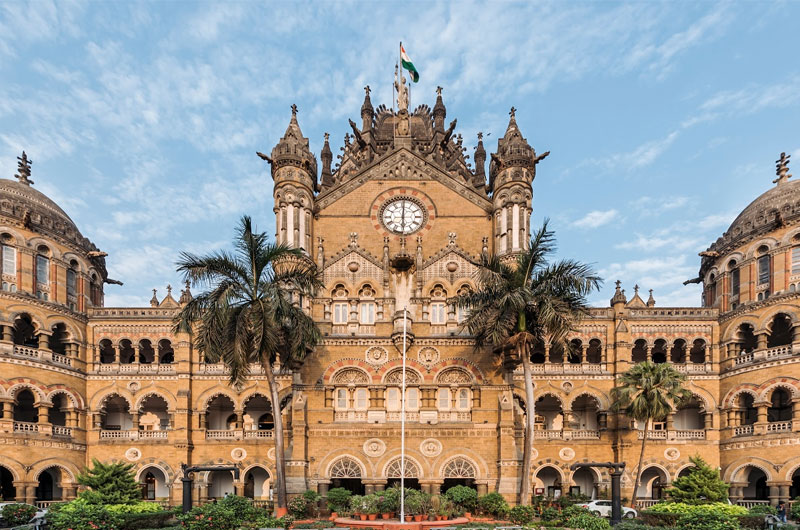
Chhatrapati Shivaji Terminus (CST): The Victorian Railway Marvel – A World Heritage Site
Chhatrapati Shivaji Terminus (CST), formerly known as Victoria Terminus (VT), is a UNESCO World Heritage Site and a historic railway station located in Mumbai, Maharashtra, India. This architectural marvel, completed in 1888, stands as a symbol of India’s colonial heritage and technological progress during the British Raj. CST is not only a bustling transportation hub but also a cultural landmark that blends Victorian Gothic Revival and traditional Indian architecture.
Historical Background
- Construction and Significance
- Built to commemorate Queen Victoria’s Golden Jubilee in 1887.
- Designed by British architect Frederick William Stevens.
- Initially served as the headquarters of the Great Indian Peninsular Railway.
- Colonial Legacy
- Reflects the British colonial influence on Indian infrastructure and architecture.
- Represents the integration of Indian craftsmanship with Western architectural styles.
Architectural Marvel
- Design and Structure
- Victorian Gothic Revival style with traditional Indian architectural elements.
- High arches, spires, turrets, and intricate carvings adorn the exterior.
- Features a large dome, ornamental iron and brasswork, and stained glass windows.
- Notable Features
- Main Dome: Surmounted by a figure of Progress.
- Clock Tower: Adorned with sculptures representing Agriculture, Commerce, Engineering, and Science.
- Frieze and Statues: Decorative elements depicting Indian flora, fauna, and mythological figures.
- Interiors: Grand vaulted ceilings, marble floors, and elegant pillars.
Specialty of Chhatrapati Shivaji Terminus
- Architectural Fusion
- Represents a unique blend of Victorian Gothic architecture and Indian craftsmanship.
- Showcases the adaptation of Western architectural styles to suit Indian climatic conditions.
- Cultural Icon
- Symbolizes Mumbai’s status as a financial, commercial, and cultural capital.
- A hub of daily commuter traffic and long-distance train travel.
Tourism Aspects
- Visitor Experience
- Guided tours available to explore the historical and architectural significance.
- Viewing platforms for admiring the exterior and capturing photographs.
- Exhibitions and displays on railway history and technology.
- Nearby Attractions
- Gateway of India: A historic monument and iconic landmark nearby.
- Elephanta Caves: A UNESCO World Heritage Site accessible by ferry from Mumbai.
- Marine Drive: A popular promenade offering views of the Arabian Sea.
- Events and Festivals
- Mumbai Local Train Experience: A unique cultural experience for tourists exploring Mumbai.
- Kala Ghoda Arts Festival: Annual cultural festival celebrating arts, crafts, and music in Mumbai.
Impact on Locality
- Economic Significance
- Central to Mumbai’s transportation network, facilitating daily commute and commerce.
- Supports local businesses, hospitality sector, and tourism-related activities.
- Cultural Influence
- Enhances Mumbai’s architectural heritage and global recognition.
- Promotes public appreciation of historic preservation and urban conservation.
Preservation and Challenges
- Conservation Efforts
- Managed by Indian Railways and the Archaeological Survey of India (ASI).
- Ongoing restoration and maintenance to preserve the architectural integrity and historical value.
- Urban Challenges
- Management of high footfall and commuter traffic.
- Measures to ensure safety, cleanliness, and sustainable tourism practices.
Conclusion
Chhatrapati Shivaji Terminus (CST) stands as a monumental landmark that encapsulates Mumbai’s vibrant history, architectural splendor, and cultural significance. As a UNESCO World Heritage Site, it not only serves as a pivotal transportation hub but also celebrates India’s colonial past and architectural achievements. The ongoing efforts to preserve and showcase CST ensure that it continues to inspire admiration and serve as a symbol of Mumbai’s rich heritage for generations to come.
